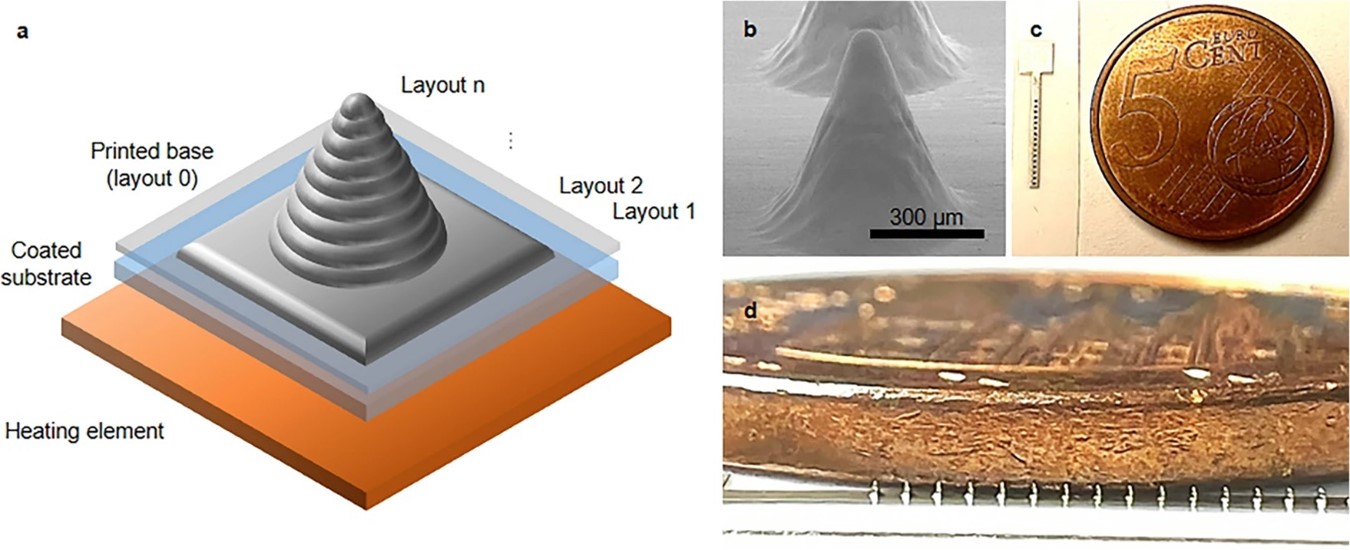Monday, 09 December 2024
Novel Method for Fabricating All-inkjet-printed Microneedles Based on Silver Nanoparticles
Scientists at ICN2 have developed a new system that makes it possible to produce microneedles more efficiently. These devices are already being used in many fields, including biosensing, diagnostics and drug delivery.

As the name suggests, microneedles are microscopic needle-shaped instruments currently used in many fields. Some of these applications are related to biomedicine, including the manufacture of biosensors to monitor or diagnose disease, or the painless administration of drugs. They have also proved to be very useful in the field of precision agriculture, where they can be used to monitor the electrochemical properties of plants. Although there are many potential applications, they are currently limited by several factors, including their complex and costly manufacturing processes.
Recently, an international team of researchers led by Dr Giulio Rosati and ICREA Prof. Arben Merkoçi (Senior Researcher and Group Leader, respectively, of the ICN2 Nanobioelectronic and Biosensors Group) has made a significant breakthrough in the fabrication of these devices. In their study, published in Scientific Reports, the researchers describe an innovative production method based on 3D inkjet printing. This system could simplify the production process, making microneedles more accessible and cost-effective.
Potential impact
Specifically, this new approach uses a special ink containing silver nanoparticles and a printing system capable of one-step production of conductive microneedles. In addition, the technique is also compatible with flexible materials such as paper or plastic, opening up new potential applications in biomedicine and agriculture.
During the study, these microneedles were shown to have suitable mechanical and electrical properties. They were able to penetrate plant leaves and measure their electrical properties.
These results position all-inkjet-printed microneedles as a key tool for precision agriculture. In addition, the researchers believe this method could be adapted to produce tailored devices using other metals, such as gold, extending its use for diagnostics and biomarker monitoring.
Reference article:
Rosati, G; Deroco, PB; Bonando, MG; Dalkiranis, GG; Cordero-Edwards, K; Maroli, G; Kubota, LT; Oliveira Jr, ON; Miyazato Saito, LA; Castro Silva, CC, Merkoçi, A. Introducing all-inkjet-printed microneedles for in-vivo biosensing. Scientific Reports. 29975 (2024). https://doi.org/10.1038/s41598-024-80840-1

